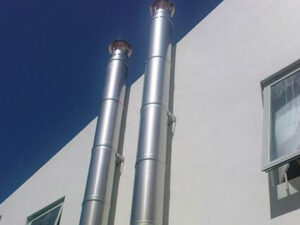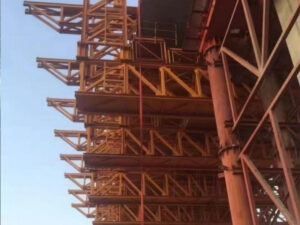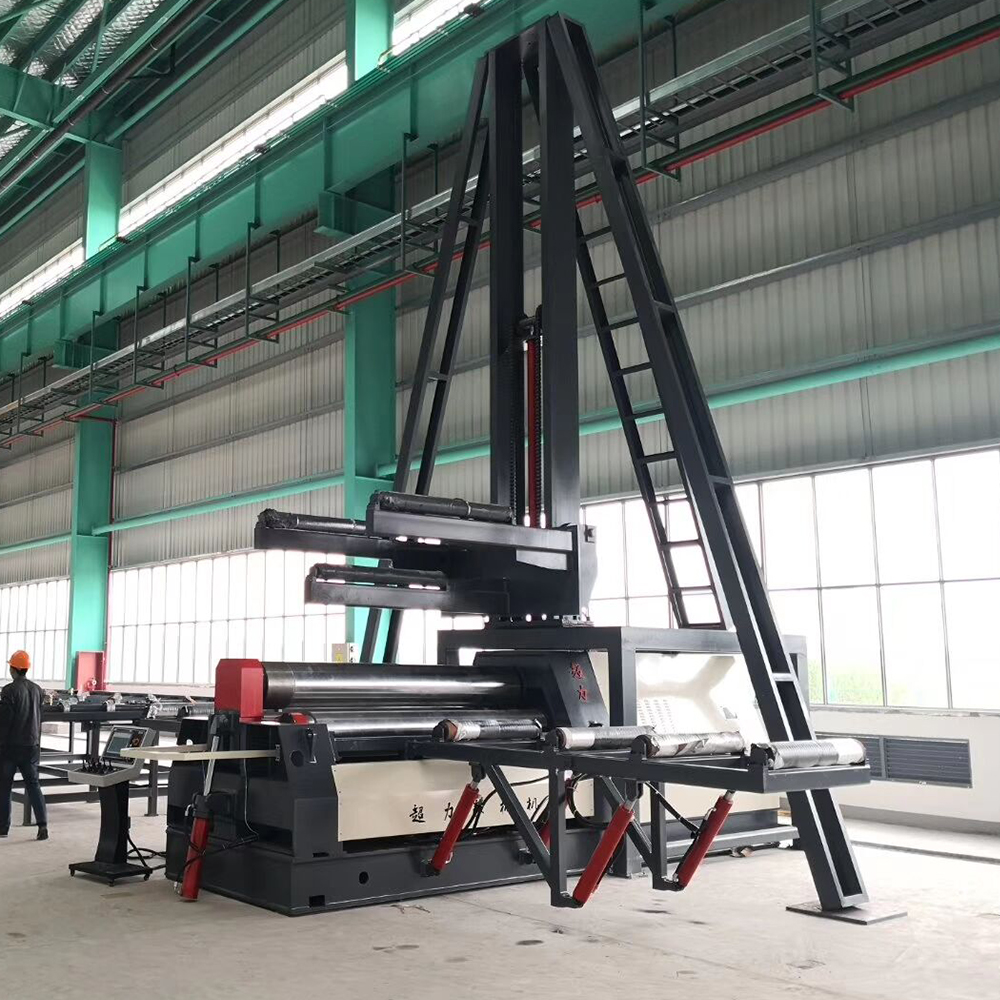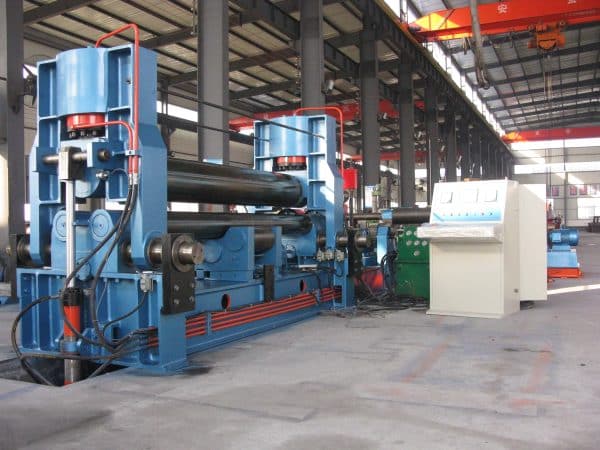The Application of Plate Rolling Machine in The Large-scale Equipment Manufacturing
Application Scenarios
 Energy industry
Energy industry
Wind turbine manufacturing
- In wind turbine production, plate rolling machines are crucial for shaping metal parts of the tower and blades with high precision. These parts need to be both accurate for the turbine’s stability and robust enough to endure severe weather. The machines’ precise pre-bending feature is key to maintaining the structural integrity of wind turbines against strong winds and other elements.
Nuclear power plant construction
- Plate rolling machines are used in this field to process reactor pressure vessels, steam generators and other key structural components. These components usually require extremely high pressure resistance and corrosion resistance. Plate rolling machines ensure the quality and performance of these components by precisely controlling the bending and forming of materials.
 Petroleum and chemical industry
Petroleum and chemical industry
Pipeline manufacturing
- Oil and gas pipelines need to withstand extremely high pressure and harsh natural environments, such as extreme temperatures and corrosive soils. Plate rolling machines are used in this process to produce these pipes to ensure the sealing and strength of the pipes. The stability and durability of the plate rolling machine are essential to ensure the long-term operation of the pipeline.
Chemical Equipment
- In the chemical industry, the manufacture of storage tanks, reactors and other pressure vessels also relies on plate rolling machines. These equipment need to withstand high temperature, high pressure and chemical corrosion, and the plate rolling machine ensures the safety and reliability of these equipment through precise processing technology.
 Construction Industry
Construction Industry
Steel Structure Buildings
- In steel structure buildings, plate rolling machines are used to manufacture key structural components such as beams, columns and trusses. The precise processing of these components is essential to the stability and safety of the entire building.
Bridge construction
- In bridge construction, plate rolling machines are used to process components such as supporting structures and guardrails of bridges. These components require extremely high weather resistance and strength to ensure the stability and safety of bridges under various environmental conditions.
Technical Advantages
Pre-bending function of 4 Rolls Plate Rolling Machine
The 4 Rolls Plate Rolling Machine's pre-bending feature is a standout technological advancement. It enables accurate bending at the sheet metal's end, eliminating the need for flipping. This streamlined process boosts efficiency and minimizes material damage typically associated with flipping.
Intelligent control system
As intelligent manufacturing advances, plate rolling machines are getting smarter. They often come with user-friendly interfaces that let operators easily oversee and manage the process. Sensors and actuators work together to gather and react to the machine's status instantly, helping to adapt controls and fine-tune production settings.
Stability of 3 Rolls Mechanical Plate Rolling Machine
The 3 Rolls Mechanical Plate Rolling Machine is a favorite in industry for its stability and durability. Its compact design saves space and simplifies operations, making it user-friendly and easy to maintain. With a robust build and efficient transmission system, it also has low maintenance costs. This makes it suitable for a wide range of sheet metal bending tasks, excelling in both large-scale production and custom jobs.
Energy-saving and environmentally friendly design
Nowadays, plate rolling machines are made to be more energy-efficient and better for the environment. They use less power and have systems to keep them cool, which is good for the planet. Also, to make workplaces nicer and less noisy, some of these machines have features that reduce noise and shaking.
Future Developments
Integrated and modular design: In the future, plate rolling machines might be built in a way that makes it easy to swap out or update parts when needed. This design will make the machines more flexible and able to adapt to different situations.
Flexible manufacturing system: Future plate rolling machines will likely be better at adjusting to make parts of all kinds of shapes and sizes. This will help them handle special orders and custom-made products more easily.
New material processing capabilities: As new materials keep coming out, plate rolling machines will have to get better at working with them. This includes things like super-strong steel, aluminum mixes, and special composites. They’ll do this to help out all sorts of different industries.



